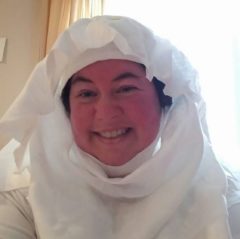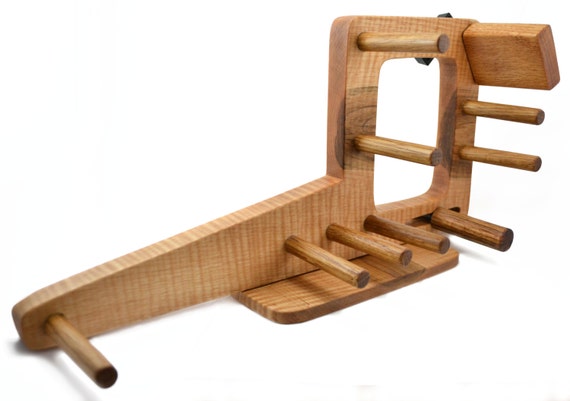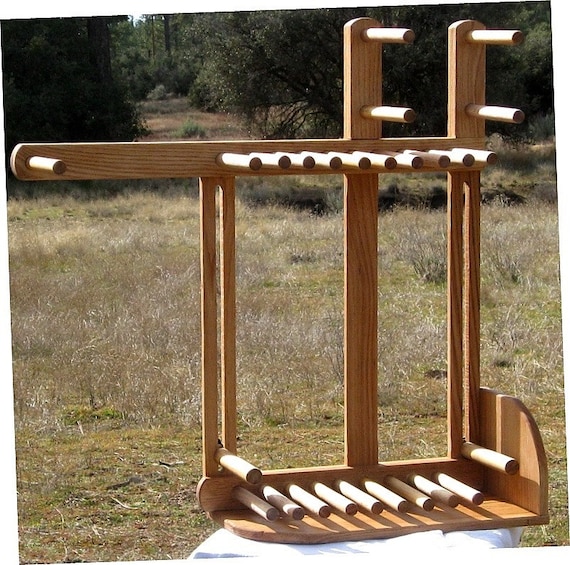I’ve been working on an “Introduction to Card Weaving” post, but ran into some technical difficulties Several hours into creation, the computer shut down, and inexplicably, the post was not saved, despite my having clicked on the “Save” button numerous times throughout the process. I have no idea what happened, but it was a significant set back. Images gone. Text gone. My mini glossary gone. In many ways, it was almost back to the first outline I created. Seriously frustrating. Hopefully I can get that back up to where it was and get it posted soon.
In the meantime, I will post a quick lesson on Advanced Card Weaving. There are many different Kivrim patterns which apparently means “Bent” (although Google Translate doesn’t have the word in its dictionary for any language). This is a split-pack weaving technique, which means that the cards will be turning in different directions, singly or in groups. Proper threading and turning will result in some stunning patterns! You can find several different varieties on the Loomy Bin, including the Egyptian Diagonals patterns.
This was a great lesson for me to learn how to read patterns that have no instructions–that is, those that have slashes in the boxes that change from left-leaning to right-leaning; from slash to back-slash. I had never done such a thing before, so I feel like I made a huge leap forward in my tablet-weaving journey.
Here’s an example of one of those patterns…

Looks confusing, doesn’t it? Well, my brain doesn’t like looking at it. I prefer to have it written out, which can take some time doing the translation. I had the same issue when I was learning to knit, so perhaps in time, I will be able to look at this kind of pattern and untangle it in my head, but for now…it’s long hand.
The pattern I decided on was Birka 6, one of several card woven bands found at Birka, a former trade site in Sweden which uncovered a great number of artifacts in an archaeological dig.

The bottom four rows are, of course, the threading diagram. The cards are threaded DCBA, so face those cards left! I chose two colors, a dark burgundy red and pale yellow for my project.
Looking at the diagram, you will see the first six cards are Z threaded, and the last five are S threaded. Here’s a great diagram to remember how Z and S threading works:

If you’re weaving along with me, go ahead and get out your thread, your cards, your loom, and warp up your cards! I’ll just go make a cuppa and meet you back here….
Ready? Great!
Through experimentation, I discovered that you start this pattern with the AD position on top. For the first four quarter-turns, you turn the cards away from you, which will form the V formation as you see in the threading diagram. We’ll call this motion “Forward” (since it appears to be the industry standard, although it feels backward in my mind…). This first few rows will, of course, look sloppy and messy…as an experienced weaver, you know it always does at the beginning!
The next phase is looking at the boxes where the slashes change direction–that indicates a reverse in the card direction. The author of this image made dark lines every two rows, which conveniently points out that the pattern of card-turning changes every two rows. You will turn the cards two quarter turns, passing the shuttle for every quarter-turn, then adjust your cards for the next two rows.
Here is what I charted out (and you’ll forgive me for not following the pattern exactly and changing directions of the first and last cards on the selvage–I never liked the idea of two cards constantly twisting up in one direction while the others moved forward and back equally. It does make the edges a little more rough, so if you want smooth edges, turn them only forward and you can always reverse to only backwards after a while.) These directions are written so each “turn” is a quarter-turn of the cards, and the shuttle is thrown every quarter-turn.
A) Turns 1-4: turn all forward
B) Turns 5-6: 1-6 Forward; 7-8 Back; 9-11 Forward
C) Turns 7-8: All Back
D) Turns 9-10: 1-6 Back, 7-8 Forward; 9-11 Back
E) Turns 11-12: 1-3 Forward; 4-6 Back; 7-11 Forward
F) Turns 13-14: 1-5 Forward; 6 Back; 7-11 Forward
G) Turns 15-16: 1-3 Back; 4-6 Forward; 7-11 Back
H) Turns 17-18: 1-5 Back; 6 Forward; 7-11 Back
I) Turns 19-20: All Back

If you are doing the edges all one direction, the directions are:
A) Turns 1-4: turn all forward
B) Turns 5-6: 1-6 Forward; 7-8 Back; 9-11 Forward
C) Turns 7-8: 1 Forward; 2-10 Back; 11 Forward
D) Turns 9-10: 1 Forward; 2-6 Back, 7-8 Forward; 9-10 Back; 11 Forward
E) Turns 11-12: 1-3 Forward; 4-6 Back; 7-11 Forward
F) Turns 13-14: 1-5 Forward; 6 Back; 7-11 Forward
G) Turns 15-16: 1 Forward; 2-3 Back; 4-6 Forward; 7-10 Back; 11 Forward
H) Turns 17-18: 1 Forward; 2-5 Back; 6 Forward; 7-10 Back; 11 Forward
I) Turns 19-20: 1 Forward; 2-10 Back; 11 Forward
When the cards have twisted too far in one direction and it starts to affect your tension, reverse the cards 1 and 11 to Back, which will untwist them. When they are twisted too far in the opposite direction, start turning forward again.
Here’s the finished piece! It’s only 5′ 6″ (not quite 2 feet), but since it was a test piece, I didn’t want to make a full-length 4-yard piece if I didn’t find it fun or workable.
I hope these instructions help you to make your own Birka band. Good luck! I hope to see lots more period pieces made and displayed on garb at upcoming events!













































